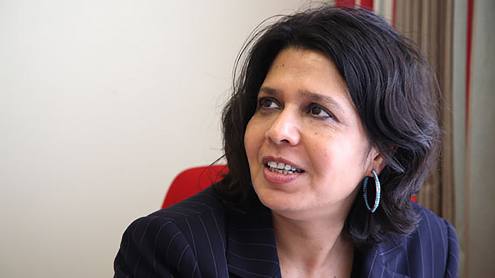I recently saw some interesting research comparing millennials – people born between 1982 and 2004 – and non-millennials, in terms of their banking preferences. The research found that the number one choice of banking platform is online (as in laptops and desktops) followed by in branch, ATM, mobile and tablet, and, finally, talking to a human on the phone. By 2018, the picture is expected to change, with online still leading the way, followed by mobile, in branch, ATM and call centre.
There was some discussion about old folks versus young folks, and the research found that millennials are all mobile-centric while non-millennials (older generations) are more online and branch focused.
Somewhere in-between
This may be the case, but I feel we need to think about it differently. The truth be told, we have digital people, digital-analogue people and analogue people. These three groups are not defined by age, ethnicity, religion or sexual preference but more by wealth, education, outlook and needs. We need a new demographic view of these people in the digital age.
Maybe it is more of a psychographic. For example, I connect with a lot of people who are very comfortable with digital and being mobile first, including some over the age of 60. My mother is far more comfortable emailing and using Facebook to communicate rather than calling me on the phone, and she is older than the normal digital demographic, as am I. However, I would say that I am a digital person – I am immersed in this world – while she is a digital-analogue person, as she loves being online but not mobile online.
Meanwhile, there are a range of people who don’t want to do anything with money on the internet as they don’t believe it is secure, and these are analogue people. Analogue people love branches where they can chat with Mary the teller who they have known since their first account opening.
Death of analogue
But let’s extrapolate this out a bit more. Who is the analogue person?
Yes, they probably are older or, if younger, they are likely to be less educated, less wealthy and less invested online. The digital-analogues like the fact that they can go into the branch to smell the money, even though the money is no longer there. The digitals just don’t care, and would rather do everything through an app or, even better, a tap on their wearable. These latter two categories are likely to be more educated, wealthy and invested online.
The problem with this is that the analogue world is therefore left serving the less profitable segment of the market while the digital world serves the mass affluent. What does that mean over time? The analogues get charged for using analogue services. Oh dear. These are the people who can’t afford those services, so eventually the most likely scenario is that they get shunted off to the post office to get served, as the post office is happy to process their analogue transactions for $1 a time.
Now that may sound like a sad world, but another thing will probably happen as a result. As the underserved analogue people realise they’re being screwed for using analogue services, they will switch. But what they switch to is the question. After all, if mobile wallets can enable one in four people in Africa to exchange value in real-time, won’t it do the same for analogue Europeans and Americans?
Chris Skinner is an independent financial commentator and chairman of the London-based Financial Services Club.






